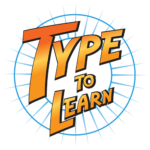Keyboarding isn’t just a nice-to-have—it’s a must-have. But for some diverse learners, learning to type can be more than just a practical skill; it can be a breakthrough. Whether your child or student struggles with dyslexia, ADHD, anxiety, dysgraphia, or processing challenges, typing can be a powerful tool to help them express themselves more confidently and successfully. And not all typing programs are created equal.
Enter Type to Learn—a research-based, adaptive typing program that has become a trusted ally for educators, therapists, and families supporting neurodivergent learners. With a thoughtful design that prioritizes structure, repetition, and progress at each learner’s own pace, Type to Learn offers a path toward success for students.
Let’s explore how Type to Learn can make a meaningful difference for students with various learning needs.
✨ 1. Support for Students with Dyslexia and Dysgraphia
Students with dyslexia (a language-based reading disorder) and dysgraphia (a writing-based motor difficulty) often find handwriting to be overwhelming. Type to Learn offers these students an alternative path to written expression by building foundational keyboarding skills in a structured, repeatable way.
Isolated Finger Movements: Type to Learn introduces two letters at a time—one for each hand—focusing on individual finger motions. This repetitive isolation strengthens the connection between motor movement and cognitive processing.
Reinforced Letter Sequences: Each lesson builds on the last, giving students the chance to revisit familiar keys before adding new ones. This sequential scaffolding supports memory and reduces cognitive overload.
✅ Why it helps: By separating the physical demands of handwriting from the cognitive task of spelling, students with dyslexia and dysgraphia can focus on expressing their ideas more fluidly and accurately through typing.
⚡ 2. Empowering Students with ADHD and Processing Challenges
For students with ADHD, and processing challenges, attention and focus are daily challenges. Type to Learn is structured in a way that meets these students where they are:
- Short, Focused Lessons: Each session is designed to build mastery without overwhelming the learner. Activities reinforce progress with immediate feedback.
- Repetitive Structure: The consistent format of review, new learning, and application helps students anticipate what’s coming next—minimizing distractions and improving engagement.
- Multi-Sensory Reinforcement: Visual and auditory cues help strengthen neural pathways and accommodate various learning styles.
- Minimizes distractions: With no advertisements or pop-ups, the platform provides a clean, focused environment ideal for learners who are easily overstimulated.
✅ Why it helps: By providing a predictable, low-pressure environment, Type to Learn makes it easier for students with attention deficits to stay on task, build focus, and experience achievement.
🌱 Reducing Anxiety and Boosting Confidence
Students with anxiety, especially around academics, often benefit from programs that allow them to build skills independently and at their own pace. Type to Learn offers:
- A Safe Space to Practice: Students can repeat lessons without penalty, review previous content, and work toward mastery at their own comfort level.
- Skill-Building That Feels Empowering: As students begin to type without looking or “hunting and pecking,” their confidence grows—along with their ability to complete assignments more efficiently.
- Flexible Timed Activities: Timed exercises can be adjusted or turned off entirely, reducing pressure and allowing students to focus on accuracy and growth without added stress.
✅ Why it helps: Reducing reliance on handwriting or the anxiety of performing in front of peers allows students to focus on what they’re trying to say—not how to say it.
🧠 Helping Students with Language and Auditory Processing Disorders
Students with language processing disorders, auditory processing difficulties, or nonverbal learning disorders can find communication and comprehension especially challenging.
- Typing as a Cognitive Aid: Typing helps separate the act of forming language from the physical act of writing, allowing students more time to formulate ideas.
- Builds Muscle Memory: As typing becomes automatic, students can focus on content instead of mechanics—boosting reading, writing, and language fluency.
✅ Why it helps: The act of typing itself can enhance memory retention, comprehension, and the ability to process language more smoothly.
🌈 For Every Learner: A Stepping Stone to Future Success
Type to Learn isn’t just about learning to type—it’s about unlocking access. Many occupational therapists and educational specialists recommend it for students who need an accessible, motivating tool to support academic growth.
Mastering typing can help level the playing field in:
- ✍️ Written expression
- 📚 Classroom assignments
- 💻 Digital communication
- 🎓 College and workplace readiness
When students with learning challenges can type their thoughts fluidly and efficiently, they’re one step closer to confidently participating in school and preparing for the demands of higher education or employment.
💬 Final Thoughts
Whether your student has been diagnosed with dyslexia, ADHD, anxiety, dyscalculia, dyspraxia, or simply struggles with focus and expression, learning to type can be a game-changer. And Type to Learn is designed to support them every step of the way—with thoughtful pacing, evidence-based structure, and a format that prioritizes independence and success.
If you’re looking for an educational tool that can truly make a difference, Type to Learn could be the key to unlocking your student’s potential.
👉 Ready to see it in action? Learn more about Type to Learn and explore how it can support the learners in your life.


